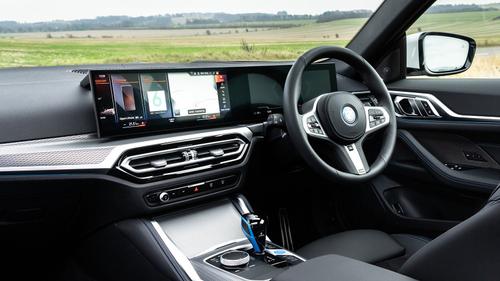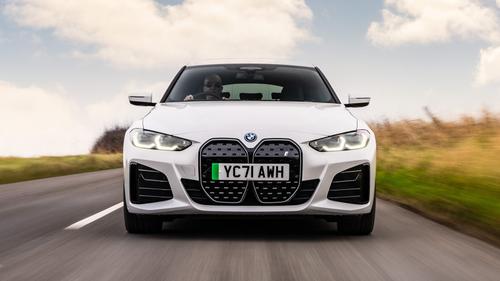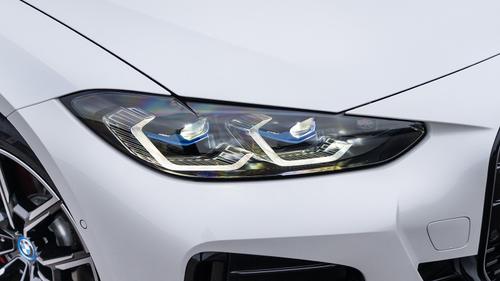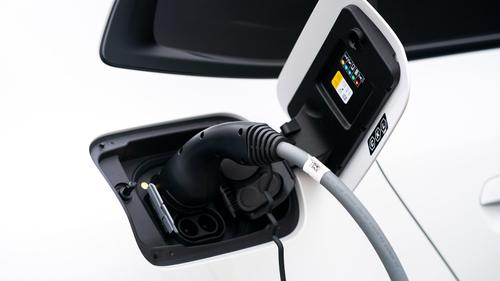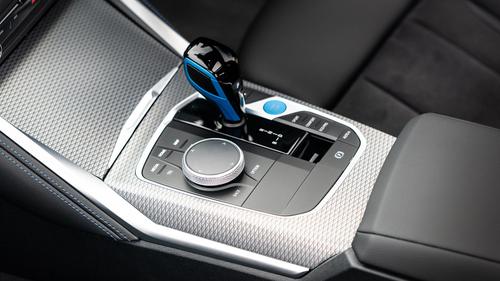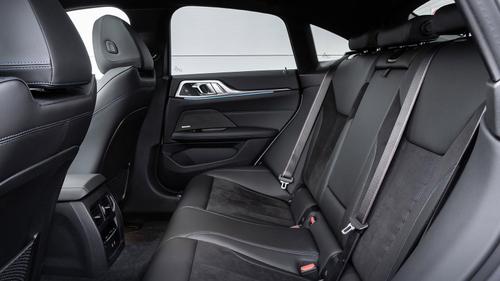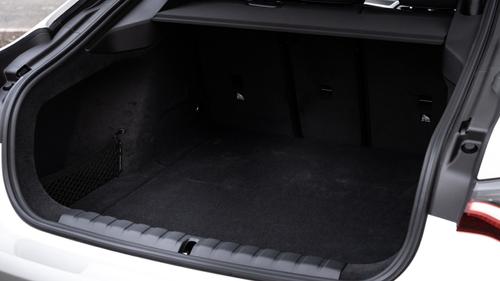











BMW i4 review

The i4 is BMW's sensible EV. It packs decent range, practicality and performance into an inoffensive five-door coupe body. This could be the answer for BMW fans who thought the i3 looked a bit too sci-fi.
However, there are plenty of top-quality EVs the i4 has to compete against, including the Tesla Model 3, Polestar 2 and Hyundai Ioniq 6. What's worse is all those options cost less than the BMW, so can the i4 justify its high price?
- Swift, near-silent performance
- Well-judged ride and handling
- Pin-sharp digital screens
- Expensive as a brand-new car
- Average practicality for its size
- Infotainment interface can be irritating
Should I buy a BMW i4?
If you're familiar with BMW's lineup, you might've already spotted that the i4 is basically a battery-powered 4 Series Gran Coupe. That means a long, five-door coupe-style body with a roofline that gracefully tapers down behind the rear seats to meet the boot lid. The car's appearance doesn't shout about its electric powertrain, which is either a pro or a con depending on your personal taste. Some drivers want their electric car to look like the future, while others want it to blend in with everything else – with the i4 strongly geared towards the latter.
"Performance is excellent. The eDrive40 sends a substantial 340hp to the rear wheels, giving it huge off-the-line shove"
Much like the i4's rivals, the BMW offers a choice of small and big-battery options, plus either single-motor rear-wheel drive or dual-motor all-wheel drive. Entry-level eDrive35 cars claim 316 miles of range from a 67kWh battery pack, while our test car – an eDrive40 – manages up to 371 miles from its 81kWh pack. Those were strong figures when the i4 launched and should be plenty for most drivers, but they now lag behind the best from Tesla and Polestar.
We reckon few drivers will be complaining about the performance on offer, however. The 'basic' eDrive35 model has 286hp and sprints from 0-62mph in six seconds flat. Upgrading to an eDrive40 brings a heavier battery but also a stronger 340hp electric motor – knocking 0.3 seconds off the 0-62mph time and pinning you to your seat whenever you mash the throttle.

This is where we reach the i4's record-scratch moment – its price. Entry-level eDrive35 cars cost just a hair above £51,000, which is a solid £11,000 more than an entry-level Tesla Model 3. In fact, for the eDrive35's price, you could afford a long-range all-wheel-drive Model 3, with performance and range figures that shame the i4. Step up to the eDrive40 version – just over £59,000 – and you're within a few hundred pounds of the Model 3 Performance, which gets supercar-baiting power and a host of sporty chassis upgrades.
Thankfully, the used market serves as something of an equaliser for car prices. You'll find substantial discounts on nearly new i4s – often tens of thousands of pounds on cars less than a year old. This brings them much closer to their direct rivals but, interestingly, also brings them roughly in line with prices for fuel-powered 4 Series models. So, if you're shopping nearly new BMWs and are on the fence about swapping to an EV, the i4 offers a lot more performance and efficiency for a similar price to an equivalent 4 Series.
We think most i4 drivers appreciate how similar this electric model feels to the fuel-powered car it's based on. In fact, when just cruising about, you may even struggle to tell you're riding a wave of electrons rather than dino juice. For the most part, it offers the same luxurious and pleasantly sporty experience as a standard 4 Series, plus the swift and hushed performance we've come to expect from modern EVs. It's also an excellent used buy, blunting the rather sharp brand-new price once it has a few miles under its belt.
Interior and technology
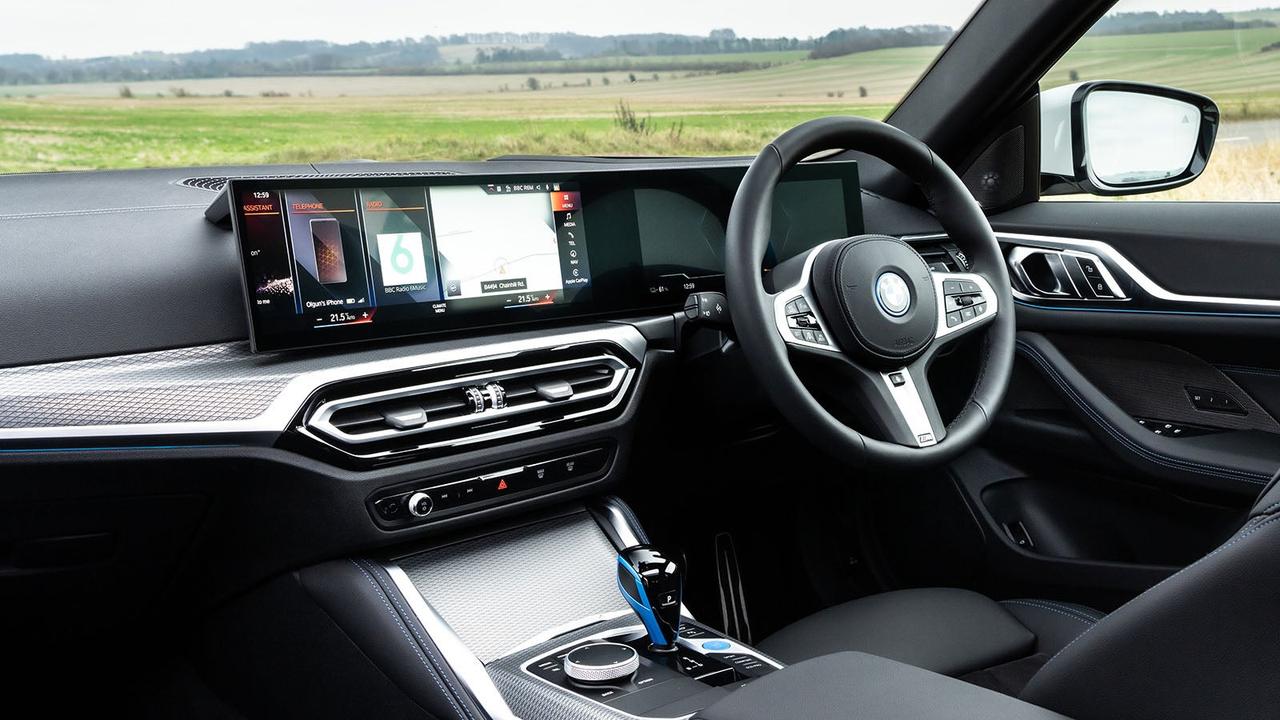
The i4's interior is something of a halfway house. There's modern glossy infotainment tech shared with BMW's latest models like the i5, but fitted to a slightly more old-school cabin. This is because the i4 shares the same bones as the 4 Series, which is about half a decade old now. Giveaways like the visible air vents and the rotary infotainment controller in the centre console show the i4's more traditional underpinnings.
That's not to say the cabin is unpleasant – far from it. Material quality is high and BMW's seats are supportive with plenty of adjustment. A feature that separates the i4 and 4 Series from the 3 Series saloon they're based on is that their seats can be adjusted quite far down, giving you a snug, sporty driving position looking out over the car's long bonnet.
We weren't sold on the Tesla Model 3's ultra-minimal setup that's swapped nearly every dashboard button for an on-screen control. If you're like us, then, you'll probably like the i4's setup. Yes, there's an enormous infotainment screen but most of the important controls are still physical, easy-to-use buttons and dials. For example, stereo volume, track selection, windscreen defoggers and drive modes are all proper buttons, making them easy to adjust without taking your eyes off the road for too long.
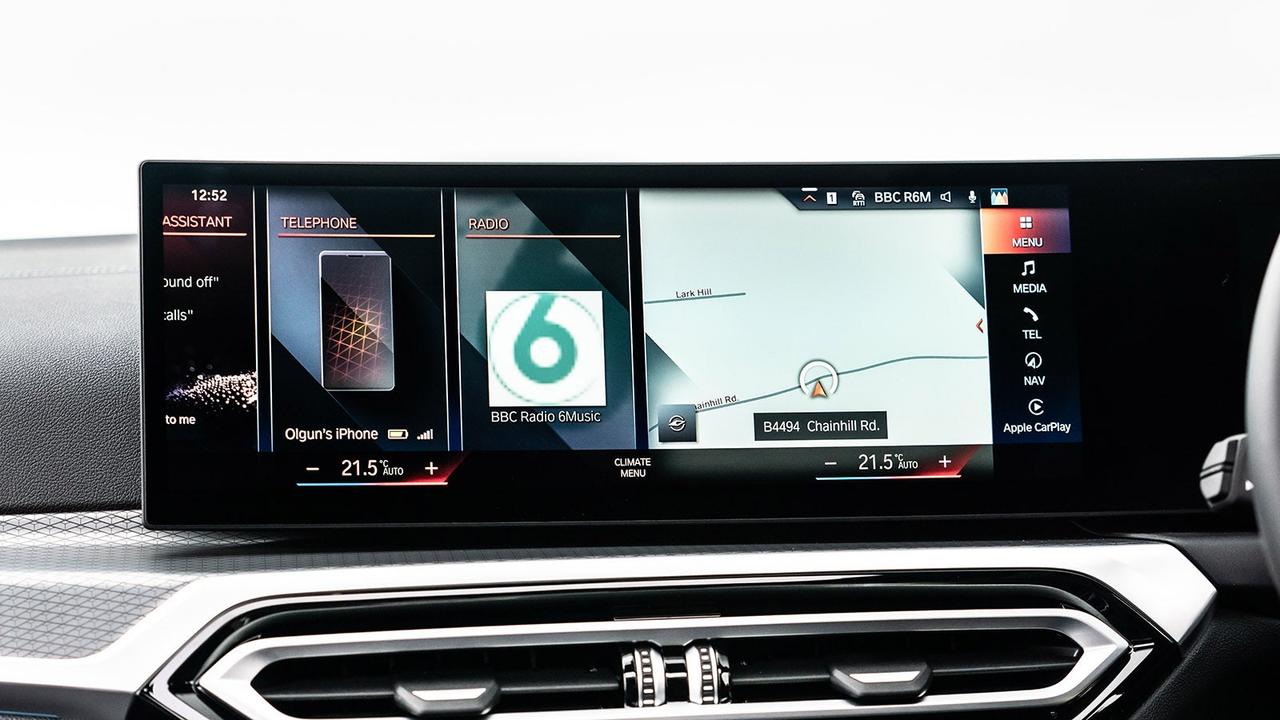
With most of the everyday controls remaining on the dashboard, the screen can focus solely on the functions that are best handled by the infotainment system. That means easy access to entertainment and navigation functions, backed up by standard-fit Apple CarPlay and Android Auto. We like the persistent on-screen shortcuts by the driver's left hand, making it easy to jump between functions. We also like the sheer size of the screen, which means on-screen buttons and fonts are large enough to read and interact with on the move.
The screen is responsive to your touch and loads functions quickly. Plus, its graphics are glossy and colourful but we did feel that there was quite a lot of visual clutter across both the centre and driver's screen. Menus in Audi and Tesla models are a little easier to take in at a glance as they use a simpler, more monochrome scheme. We also think BMW's app menu is so poorly designed that it's almost dangerous, presenting you with a long list of tiny icons like a smartphone app menu, which is incredibly hard to read and use while driving.
Sadly, BMW's also fallen for the modern fad of putting the climate controls in the touchscreen. There's a small, persistent touch button at the bottom to open the climate menu, but it's far less intuitive than having dedicated physical buttons. On the plus side, however, BMW still fits a rotary controller for the infotainment system, which makes simple adjustments easier while on the move.
Practicality
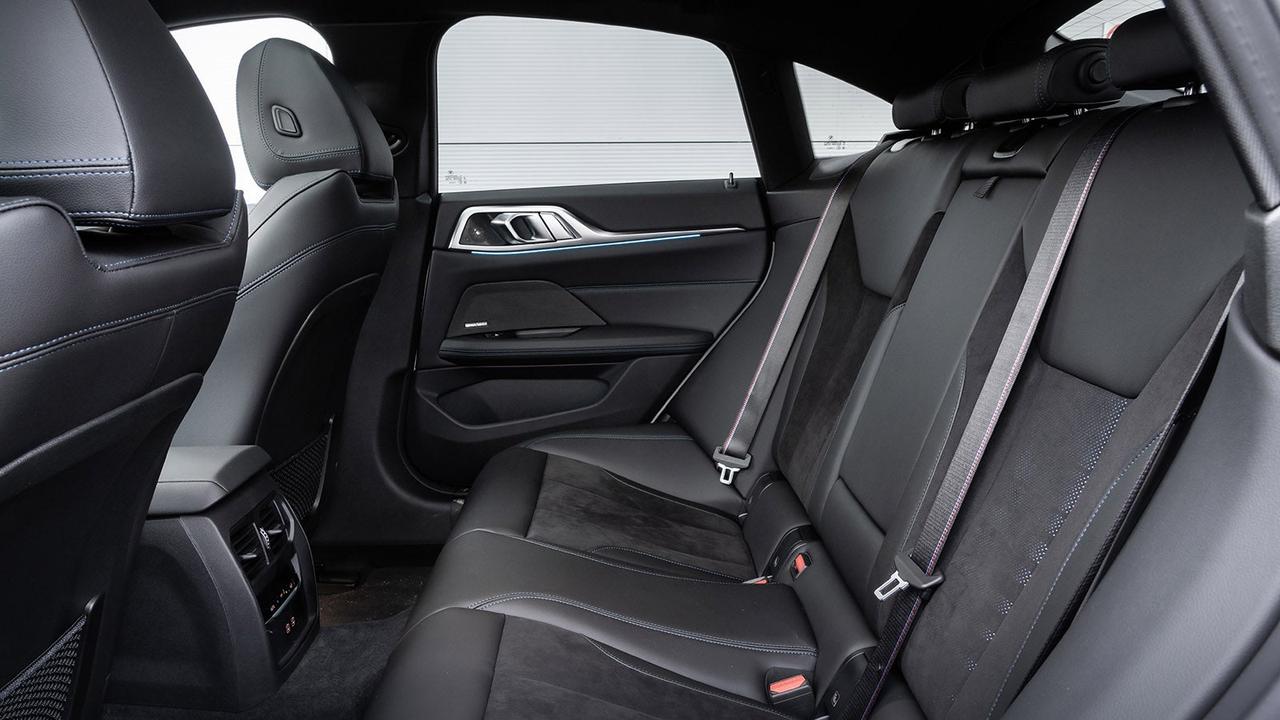
In isolation, the i4 is decently practical. Average-sized adults will fit in both rows with space to spare, while the 470-litre boot should be enough to use the i4 as a family car. The problem arises when you compare the i4 to other EVs.
Battery-powered rivals like the Tesla Model 3, Hyundai Ioniq 6 and Volkswagen ID.7 were designed as electric cars from the ground up with no engine or gearbox to accommodate. That means their axles are pushed out to the edges of the body and their cabins elongated for better practicality. Meanwhile, the i4 is a little hamstrung by sharing a chassis with a fuel-powered car, and makes slightly less efficient use of the space it takes up.
The difference is most noticeable if you're carrying very tall adults, where the front seat starts to steal from rear-seat legroom. You may also find that tall rear-seat passengers brush their heads against the headlining, since the i4's aerodynamic roofline sweeps down towards the back of the car. Another slight disappointment is the i4's lack of frunk (front trunk), which many ground-up EVs provide. Lift the i4's long bonnet and all you'll find is a massive expanse of plastic hiding a handful of mechanical and electrical parts.
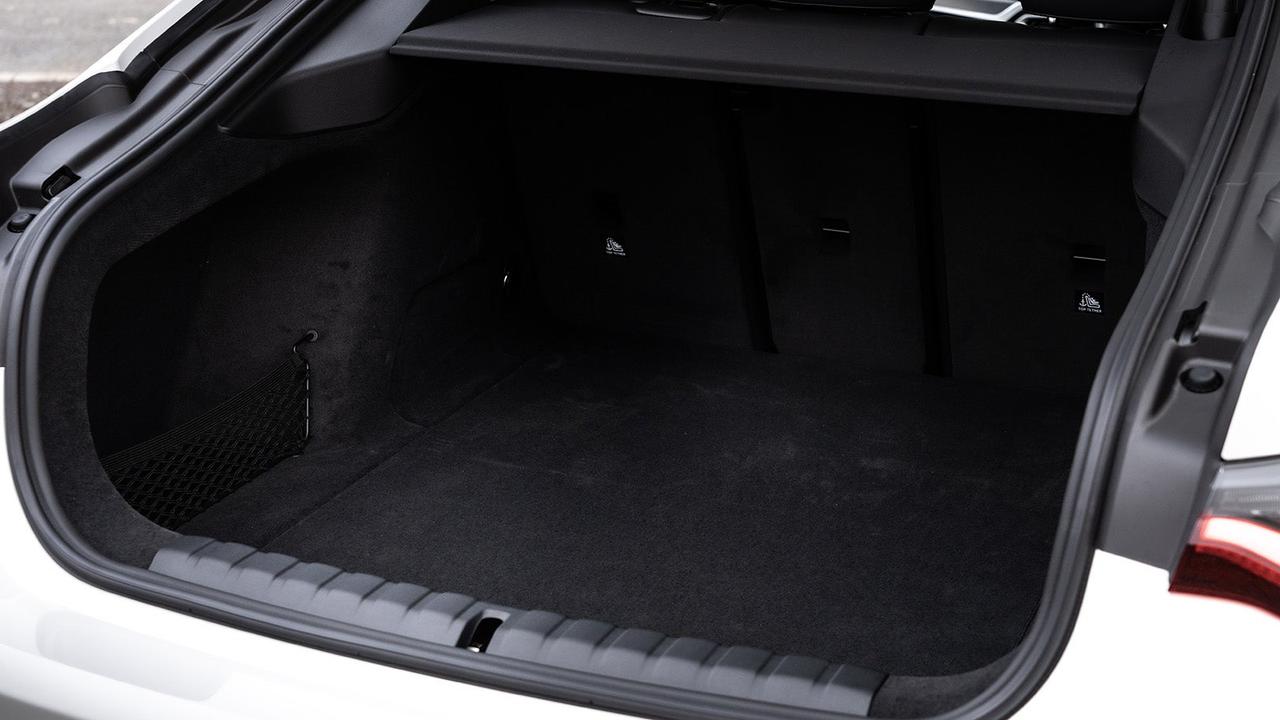
Despite only having the one cargo area, the i4 should still provide enough storage for the average family. A plus point over the Model 3 is the i4's hatchback-style boot lid that lifts with the rear glass. This leaves a massive opening to get stuff into the boot, while the Tesla's saloon-style boot lid is more restrictive. The space itself is long and wide, but not particularly tall – folded pushchairs or suitcases won't be a problem, but awkwardly shaped items might be harder to fit.
Cabin storage is strong on most counts. The glovebox, door bins and centre console cubby are all reasonably large and sensibly shaped. Some ground-up EVs have deleted the traditional centre console, opening up a space between the front-seat footwells for handbags or rucksacks. However, since the i4 shares a big transmission tunnel with its 4 Series sibling, there's no such space available here. The tunnel also eats up all the footspace from the centre-rear fifth passenger, while pure EV rivals usually have a totally flat floor.
Range and performance
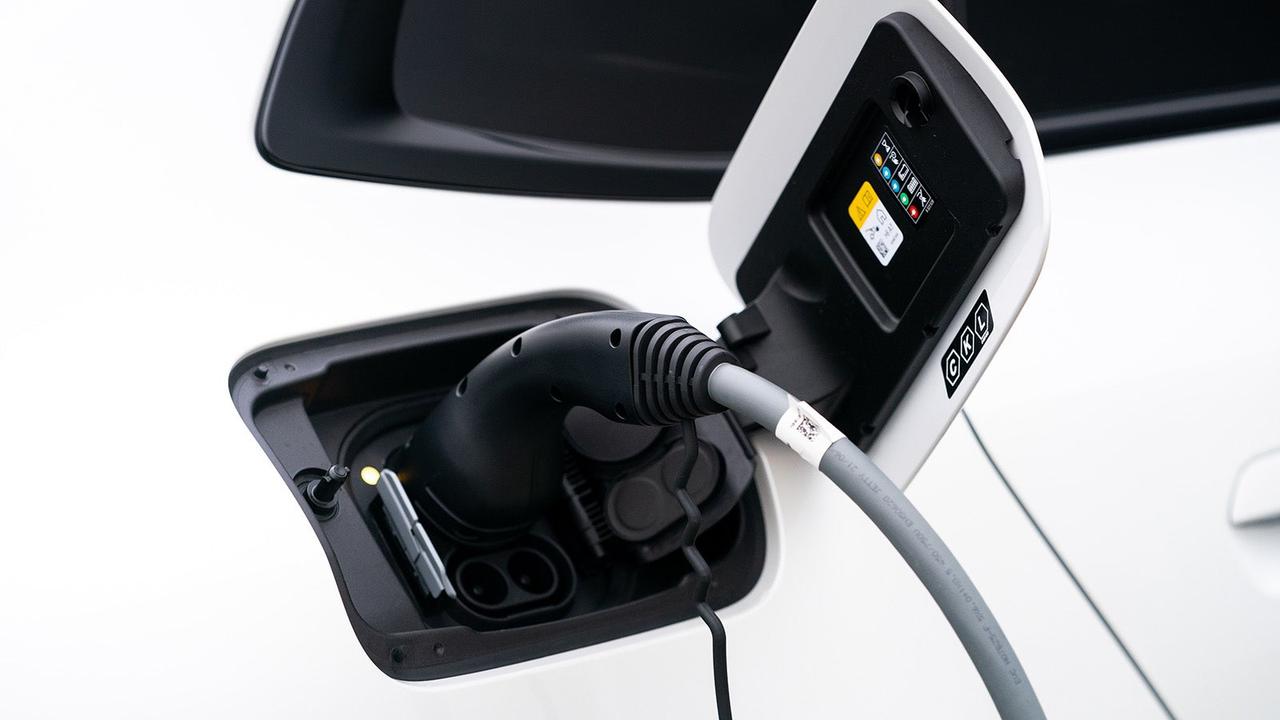
Our i4 eDrive40 test car has the middle option for battery and motor. That means the larger 81kWh battery pack paired with a 340hp electric motor. This gives the longest quoted range of any i4 model at 371 miles. We reckon that'll equate to around 300 real-world miles if you're travelling at motorway speeds. The strong 205kW max charge rate also means the benchmark 10-80% fast charge takes just over half an hour – perfect if you're making a pitstop for a loo break and a coffee.
It's a bit disappointing that the more desirable eDrive40 setup is a full £8,000 more expensive than the entry-level eDrive35. That car claims 316 miles from a 67kWh battery pack, but this will probably be closer to a mid-200-mile figure in the real world, making it a bit harder to tackle long journeys. Charge rates are a fraction slower on this model too, so you'll still be waiting the same half an hour for a 10-80% jump.
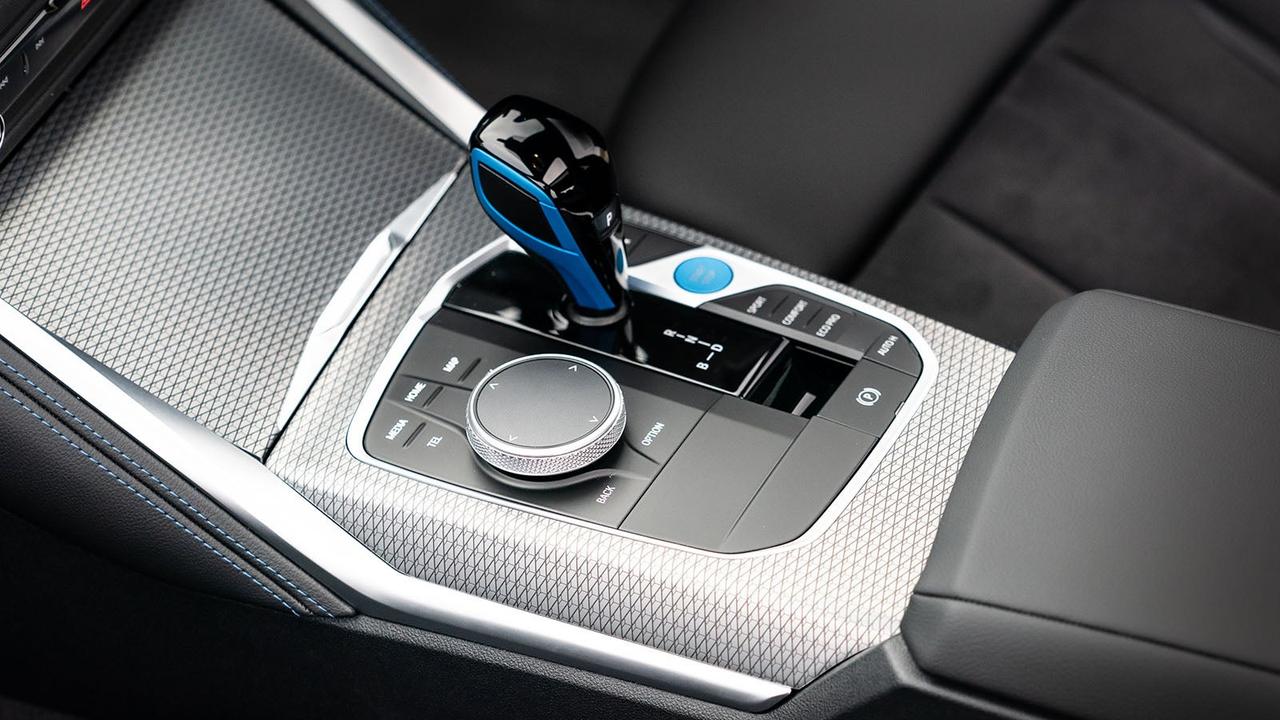
On the plus side, performance is excellent. The eDrive40 sends a substantial 340hp to the rear wheels, giving it huge amounts of off-the-line shove. Any time you lean on the accelerator, you're rewarded with instant G-force pushing you back into the supportive sports seats. It's also accompanied by what BMW calls 'Iconic Sounds' – essentially a sci-fi spaceship-like noise piped through the speakers any time you accelerate hard. It does add a little drama to the occasion but we can imagine turning it off if we had to live with the i4 long term.
Pedal tuning is absolutely spot on, allowing you to drive the i4 smoothly at low speeds. This isn't always the case for rival EVs, which can feel a bit clumsy as they juggle the physical brakes and the e-motor regenerative braking. Refinement is also unimpeachable, with the car insulating you from nearly all tyre, drivetrain and wind noise, making it supremely relaxing on long drives. All the more reason to turn the Iconic Sounds off!
Driving and comfort
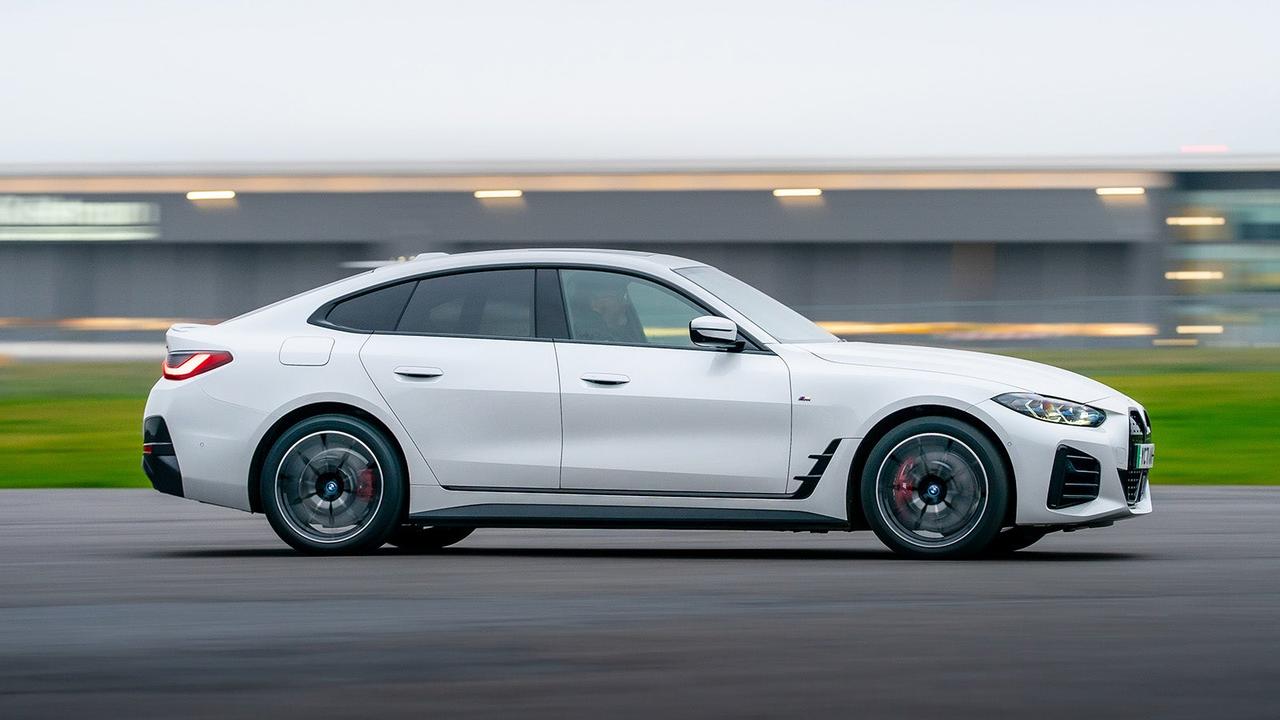
Lots of cars claim to be sporty – usually making their driving experience worse in the process – but the i4 truly achieves the sporty EV brief. Body control is fantastic, with the car remaining stable and composed even over horribly haggard British roads. Meanwhile, the steering treads a fine line between being light enough for easy daily driving, while delivering enough reassuring weight as you add more lock to give you an impression of what the front wheels are doing.
That slick suspension setup also means body roll is well contained, allowing the front end to feel sharp and pointy without upsetting the car. This contrasts against the Model 3's approach which pairs faster steering with slightly softer suspension, sometimes causing that car to feel nervous when driving spiritedly. Our only slight complaint about the i4 is that the steering wheel can feel just a touch too light when pointed straight ahead, but it doesn't impact the car's overall sense of stability.

With such a driver-focused handling setup, you might expect the i4 to have a punishing ride quality. Thankfully, the setup here is very well judged, with a good amount of compliance over bumps, despite the i4's substantial weight. Make no mistake, you'll feel impacts from the suspension over potholes and speedbumps, but nearly all the harshness is tuned out before it makes it to the base of your seat.
Most of the cars in this class drive well, but we reckon the i4 has a little extra appeal for keen drivers. This is the EV you should pick if performance and handling are priorities for you. However, with such a focus on driver enjoyment, we couldn't help find ourselves wondering if we'd be having more fun in a petrol-powered M440i. That car delivers mostly the same user experience as the i4, but with the scintillating soundtrack and performance of a turbocharged 3.0-litre engine enhancing the experience.












































